By Ross MacBeath
This post, following previous posts on the Loch Chon campsite in Strathard (see here) and (here) for example, looks at recent damage caused to the environment at Loch Chon by the Loch Lomond and Trossachs National Park Authority. The photos in this post were taken before the recent dry period.
Two new vehicle tracks have been created that are not on the plans
| The Plans for the campsite at Loch Chon specifically state that environmental damage to the site will be kept to a minimum and anything that is likely to cause such damage will be vetted by the Environmental Clerk of Works, part of whose role is to prevent any work likely to cause unnecessary damage to the fragile environment and eco system of the ancient wood. | National Park Planning conditions (click to expand) |
That said, where was the Clerk of Works when contractors decided to access the site from the B829 main road directly onto the hillside of the development. It should have been prohibited as promised by the LLTNPA’s Chief Executive Gordon Watson, who told us at the Strathard Community Council meeting on 4th July 2016 that pitches would be hand scraped. This lead people to believe no machinery would be used on the hillside. Instead the LLTNPA contractor has created two new tracks, the first down the full length of the hillside to the loch side path, the second joining the first at the new path just below pitch 19. Together these machinery tracks have caused serious environmental damage to the whole ecosystem. . This is a failure of the LLTNPA and their Clerk of Works to adhere to proper procedures put in place to prevent contractors from encroaching and damaging the fragile boggy environment within the ancient wood where their development is centered..
The creation of these tracks by the unwarranted use of vehicles has disrupted a long swathe of the eco system stretching down the the entire hillside forming some deep channels encouraging water to flow down the hill and creating new water courses in the process. What should happen is that the Planning Authority should intervene and instruct the applicant to restore these areas to their original state. However, the National Park Authority, as the body which applied for planning permission, have not set aside vegetation for restoration works as was stipulated as a planning requirement. So it will be interesting to see how the Gordon Watson the Chief Executive of the Planning Authority will enforce the restoration on Gordon Watson the Chief Executive of the Park Authority. How can there be anything other than a conflict of interest in this unhealthy arrangement.
Vehicle Track 1:
The image on the left shows Vehicle track 1 which runs down the entire slope to the lower transverse path by the shore.
Vehicle Track 2:
The image and track on the right side continues down to the path between pitch 19 and 20, a tree has been lopped off to clear the way for vehicles to pass.
There is also evidence of minor tree damage caused by vehicles: another broken promise by the NPA who promised to safeguard trees
Are contractors acting on their own or has the Clerk of Works sanctioned this damage?
Besides taking vehicles onto the hillside, outwith the scope of the planning permission granted, the contractors have also made modifications to the layout of the camping pitches. It is not clear if this has been agreed with the planning department or whether the Clerk of Works, who is supposed to be the intermediary and to vet all such operations, agreed to these changes in writing. This is because the NPA does not, following a planning decision, publish information about whether any changes have been made to the planning permission they granted, as one might expect. So, its not clear if the paperwork exists, but if it does, why are the documents not available for inspection?
For an organisation who claim conservation drive everything they do, the NPA have failed dramatically. It would seem the need to keep the development within budget has a far greater value than the conservation of the ecosystem they swore to protect and care for during this unwarranted development.
The two vehicle tracks meet just below the road then continue independently down the hillside to various locations.
Vehicle Track 1
The disruption to the vegetation and underlying peat structure at root level is evident.
Vehicle track 1 branches off to the top of pitch 19
At each branch, or turn of the vehicle, a more intensive area of damage is found. The major problem this creates is not limited to the scars that will take years to heal but the creation of vertical groves that will allow water to enter and move more rapidly down the hill in new channels with a danger of forming new water courses. This poses real risk to the soils and may wash them down the hillside forming a new stream..
Looking down Hill track 1 to the transverse “high path”
 It is clear these two tracks have been used in the construction of pitches 19 and 20, as well as the paths used to access them, and other areas at this end of the campsite. In fact track 1 continues further down the slope to the path running along the shore. It appears the vehicle tracks are being used to deliver materials for modifications to pitch surfaces, which were unsuitable for camping, and in the process inevitably causing more damage.
It is clear these two tracks have been used in the construction of pitches 19 and 20, as well as the paths used to access them, and other areas at this end of the campsite. In fact track 1 continues further down the slope to the path running along the shore. It appears the vehicle tracks are being used to deliver materials for modifications to pitch surfaces, which were unsuitable for camping, and in the process inevitably causing more damage.
There appears to have been no attempt either to protect the vegetation and little if any attempt to restore the damage.
Looking down the track from above pitch 19
The environmental damage is easily traced by the disturbed peat and the rust coloured remains of damaged mosses deprived of their water supply due to mechanical disturbance.and the churned up peat now waterlogged in many places. This is causing water to flow on the surface to collect In many locations where it did not do so before.
The track at this point diverges. The branch straight ahead crosses the new transverse path and continues downhill. The other branch, veering off to the left of the image above, is to the corner of the path where the vegetation and ecosystem around the corner has been churned up. This has formed a collection basin for water which flows both under, across and down the sides of the path. making the path unstable (spongy) and diverting water from the natural water course down the sides of the path.
There is also evidence here of another tree being sacrificed to allow the vehicle to pass as well as cross contamination of materials on the path sides, which extends far beyond the specified width of the path.
The vehicle track crosses over the path and continues on downhill
This environmental damage should have been avoided in the first place and it is obvious that the National Parks has failed in it’s duty of care. I wonder what the National Park, as Planning Authority, will do to enforce the reinstatement of the environmental damage created by the National Park itself?
When you build a transverse path across the hillside, this disrupts the natural flow of water downhill, with the potential to disrupt the whole ecosystem further down the slope. Evidence of this redirection will be covered in a future Post on paths.
It is clear that Hill Track 1 has been created by vehicles accessing the upper hill path and pitches in the campsite both from the B829 road above the campsite and from the lower shore path.
Vehicle Track 2
Vehicle Track 2 again starts from the B829 above the site and travels down hill to the junction below the road. Track 2 then cuts off to the North side. The impact appears slight at first (top photo).
Track 2 continues down the hillside
As the ground gets wetter the impact increases.
The tree in the foreground has been lopped of to allow the vehicle to pass. contravening planning and environmental protection conditions. Its fine apparently that the National Park and its contractors chop down trees but not if occasional rogue campers do this.

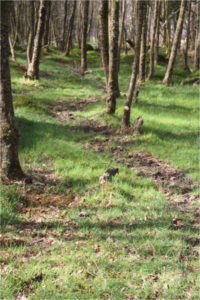

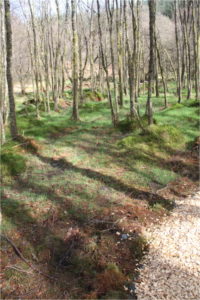
Hill track 2 meets up with the path between pitch 19 and 20.
The track has had a significant impact on the vegetation and the boogy soils within the woodland. There is something very wrong about a National Park Authority, which is supposed to be protecting the environment and who claim to have procedures in place to prevent such damage, have caused this damage themselves. The NPA appear to be incapable of setting up effective damage prevention procedures even where its paying for the works and the photos show vehicles have driven around the site at will.
There is now a distinct possibility that there will be follow on problems with changes to the ecosystem caused by diversion of water courses by these tracks and other LLTNPA created water channels.
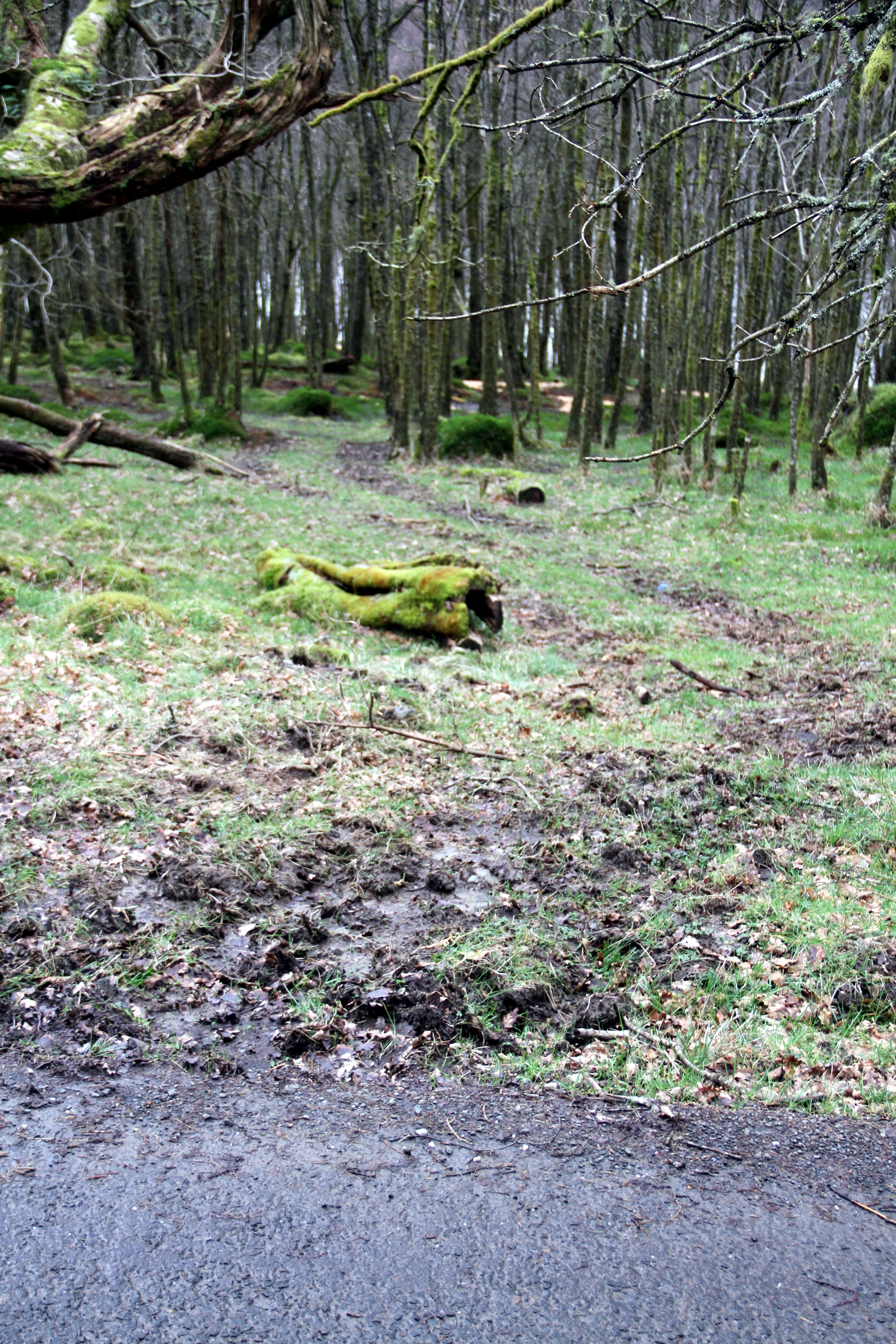
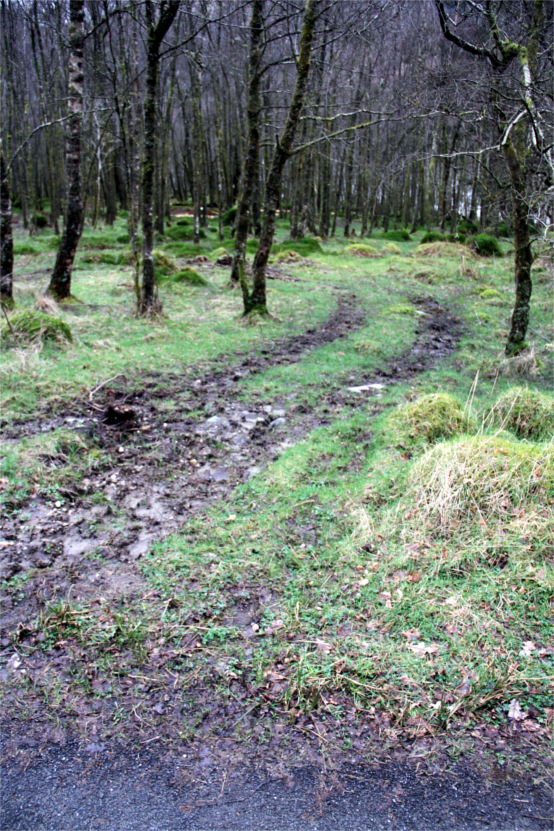
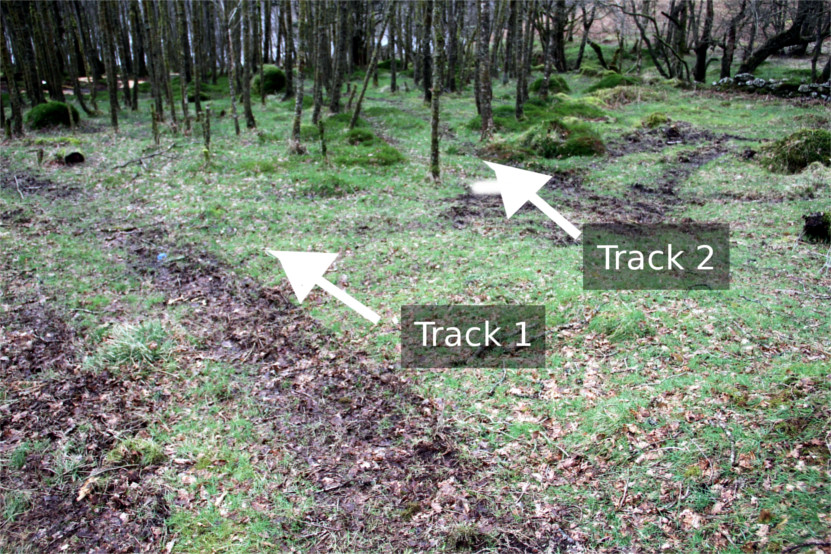


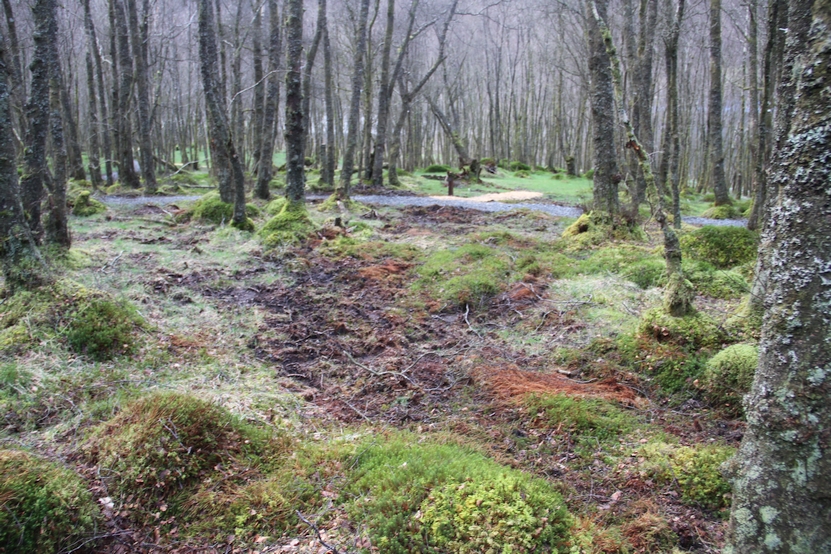
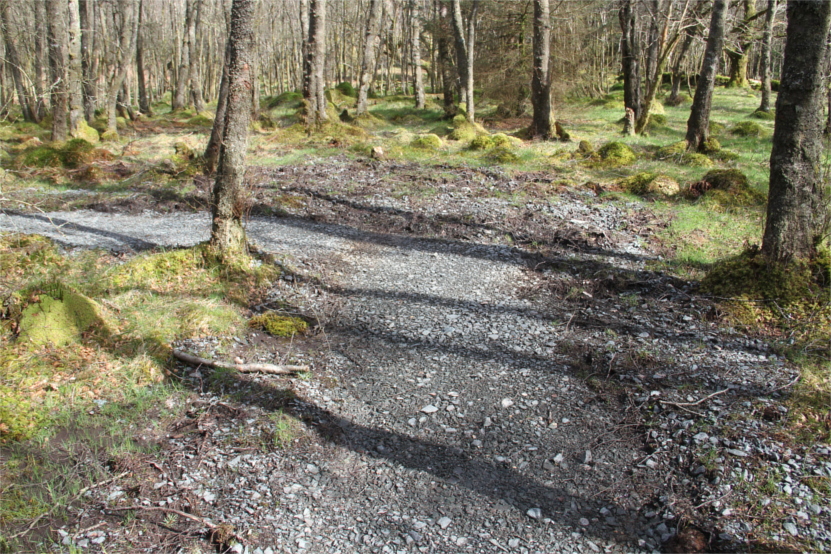
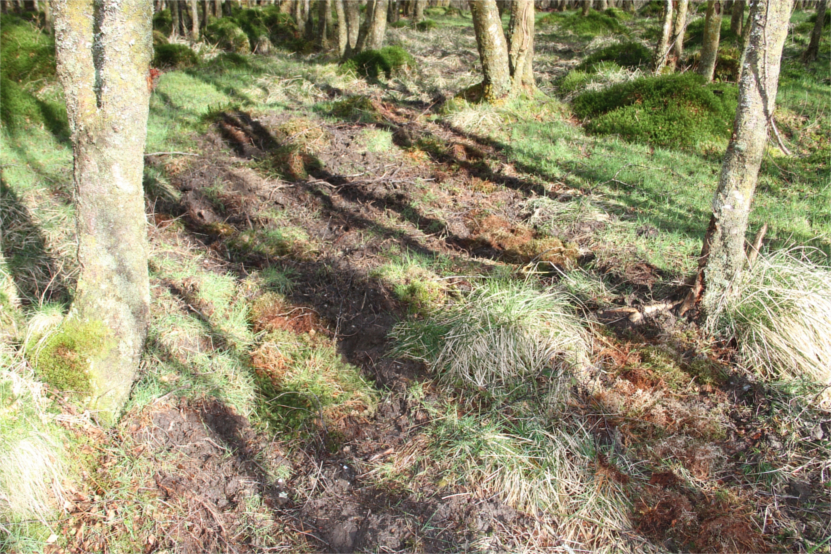

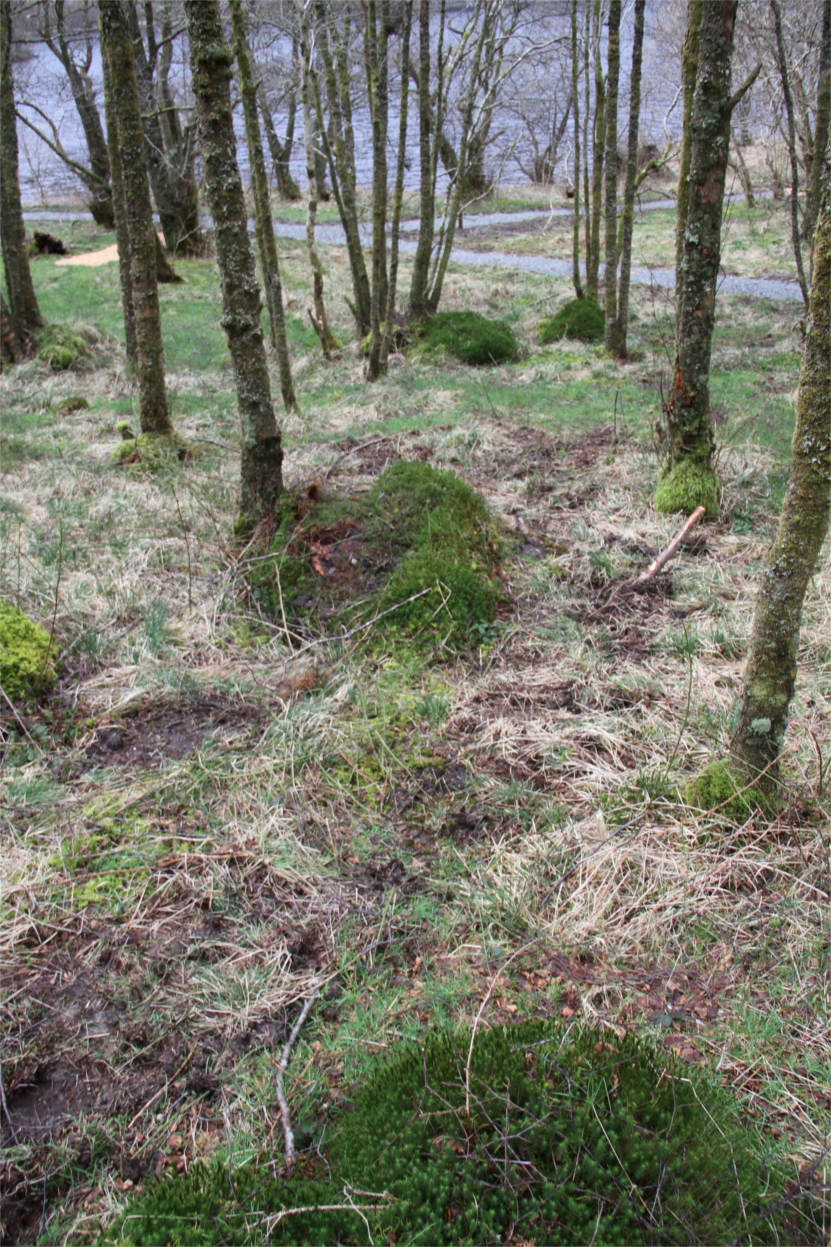
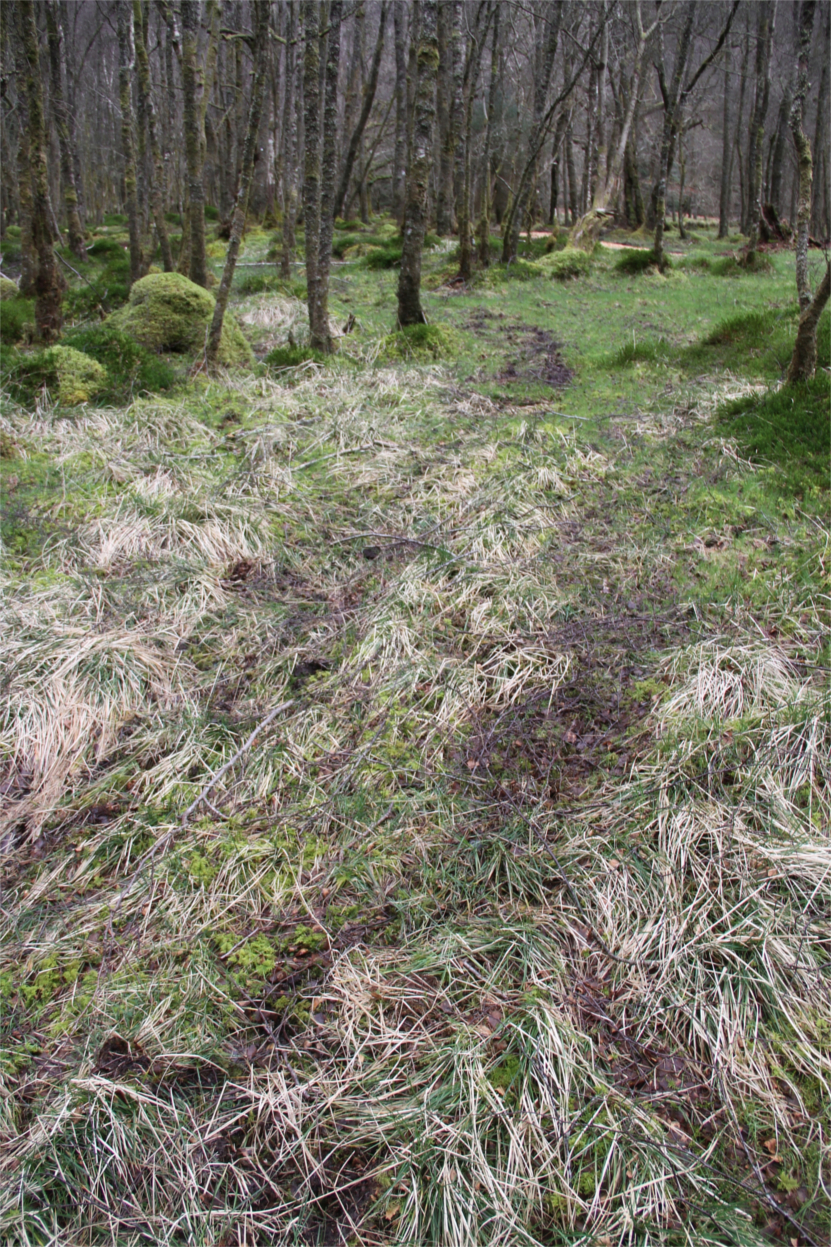
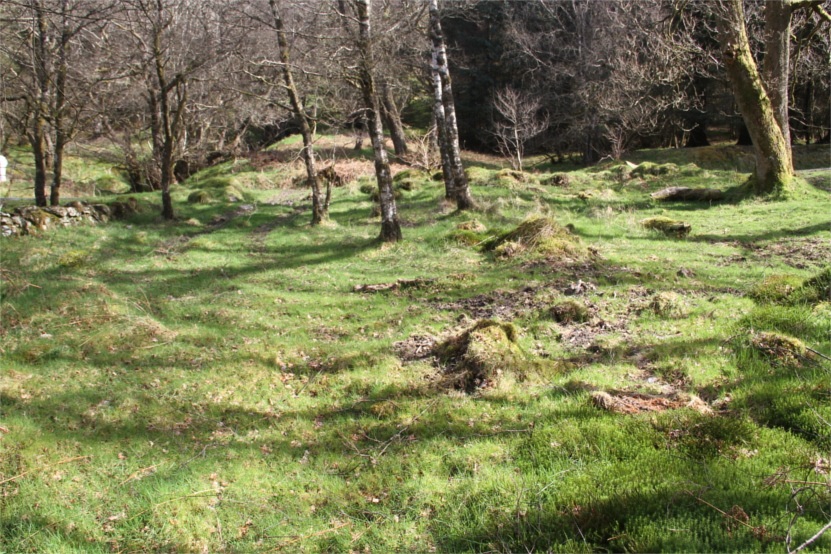
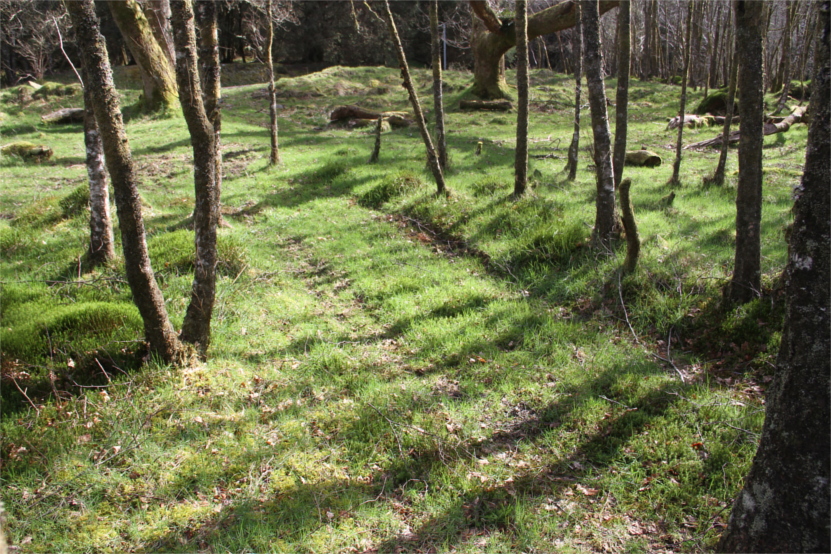


Another rediculous and easily avoidable shambles by the LLTNP. Let’s put them all in a book, I bet it’s give war and peace a run for its money in length.